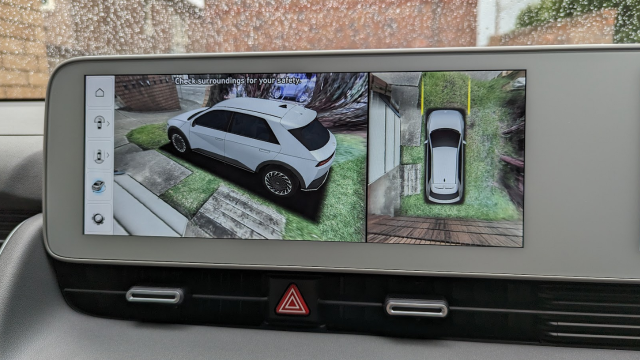One of the more visually impressive safety assistance features that newer vehicles have received over the past few years is 360-degree car camera displays – comprised of live camera footage from all around the car.
It’s a neat trick, and it’s actually super useful, but how do carmakers actually do it? Well, firstly, to make sure we’re across the same concept, here’s the feature in-action on the Polestar 2.
Cool, right? It’s often paired with more expensive vehicle models, and if you’ve been keeping up with our electric vehicle reviews, you’ve likely seen it come up now and again.
But how does it actually work?
How do car cameras display a 360-degree camera?
Often referred to as a drone view or a birds-eye camera, the 360-degree camera perspective that’s created and displayed on your car’s infotainment system is created by stitching together the camera information from around your car and generating a top-down render based on the information available. There’s no camera hovering above your car – an image of your car is simply placed on the screen to fill the blank space.
We’re not talking about just one or two cameras here, though. You’ve probably spotted small circular indents around your car, in lower locations of the bodywork so that they’re not immediately noticeable.
These are the cameras and sensors that contribute to this 360-degree view. Adding to this, the 360-degree view is often paired with guiding and alignment lines that make it easy to park by indicating the turning circle of your car. When you use all of this tech, tight space parking is made a breeze.
It’s simple to get your head around, though it can be made even more complicated when car companies decide to render 3D models of their cars, as was the case in our review of the Kia EV6 GT and as is the case with the Hyundai Ioniq 5.
However, the cameras aren’t perfect, and while they provide a sophisticated surround-car array of images, just keep in mind that the camera range is usually fairly limited.
The cameras on the sides are typically fairly shallow, only displaying very short camera range. Meanwhile, the cameras on the front or the back range a fair distance, making it much easier to park when you’re headed in either direction.
Obviously, it’s at its best when displaying close-by obstacles, but be cautious if you want to use the cameras for something outside of parking (for example, reversing onto a busy road). Don’t use the cameras in cases like this, as they won’t be able to provide a reliable feed of oncoming cars until they’re quite close.
While it’s cool tech, just know it has limitations. If your car has the capability, I absolutely recommend playing with it for a bit so that you get a better understanding of how it works in your vehicle.
In my opinion, it’s one of the coolest safety features I’ve seen in cars for a while, and it makes parking everywhere so much easier.
